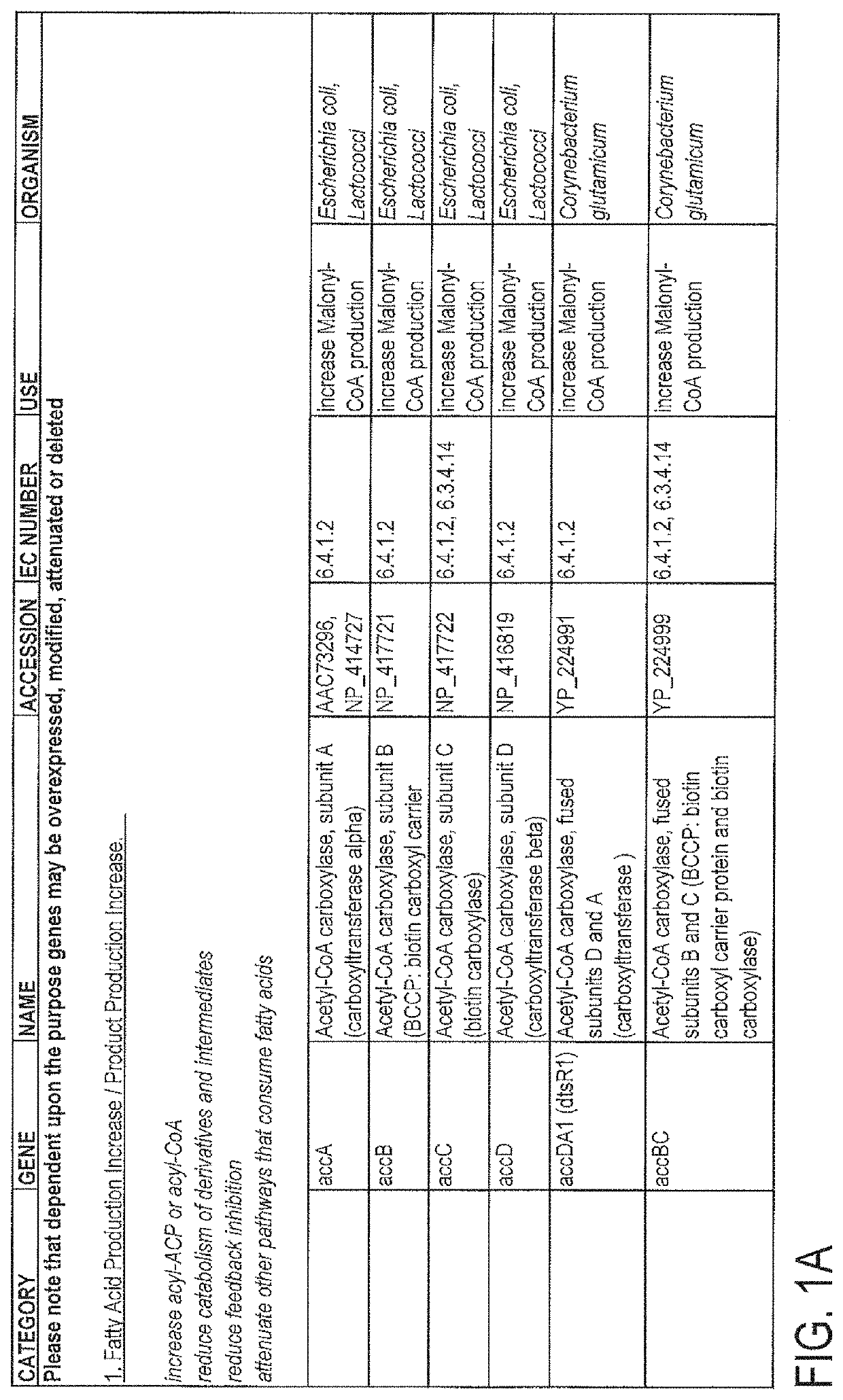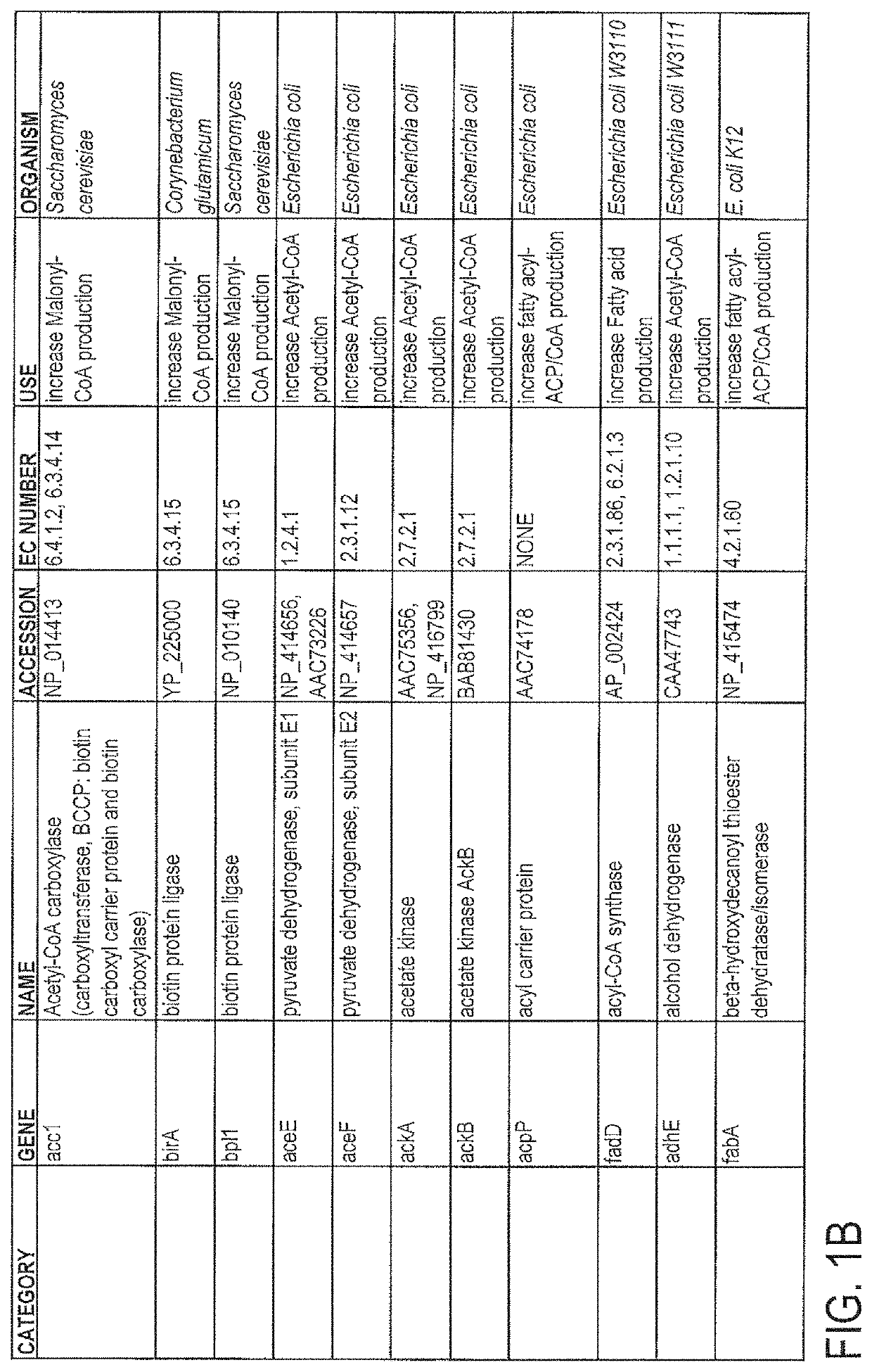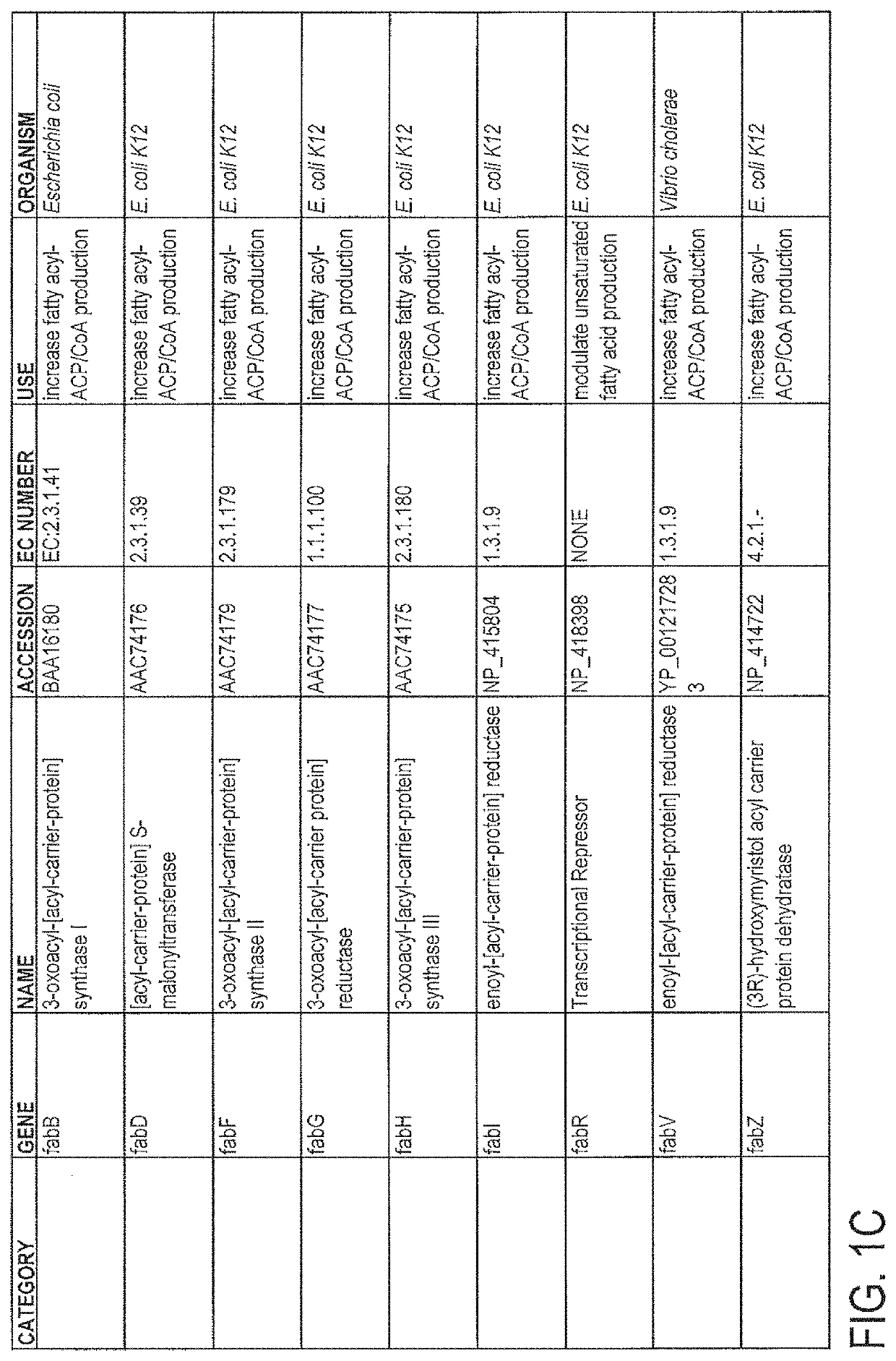Methods and compositions for improved production of fatty acids and derivatives thereof
a technology of fatty acids and derivatives, which is applied in the direction of peptides, peptide sources, peptide/protein ingredients, etc., can solve the problems of limited commercial use of crude petroleum extracted from the earth, limited economic and environmental benefits, and high cost of crude petroleum refinery and purification, so as to improve the expression, yield or productivity of the fatty acid or fatty acid derivative produced by the engineered host cell
- Summary
- Abstract
- Description
- Claims
- Application Information
AI Technical Summary
Benefits of technology
Problems solved by technology
Method used
Image
Examples
example 1
[0183]This example demonstrates a method to identify engineered host cells which display enhanced production of fatty acids and derivatives thereof.
[0184]ALC310 is a previously characterized E. coli strain having the genotype MG1655 (ΔfadE::FRT ΔfhuA::FRT fabB[A329V]ΔentD::PT5-entD) which carries the plasmid ALC310 (pCL1920_PTRC_carBopt_13G04_alrA_sthA) (SEQ ID NO: 13) and produces fatty acids and derivatives thereof. To identify strains which display an improved titer or yield of fatty acids or derivatives thereof, transposon mutagenesis of ALC310 was performed followed by high-throughput screening.
[0185]The transposon DNA was prepared by cloning a DNA fragment into the plasmid EZ-Tn5™ pMOD™ (Epicentre Biotechnologies, Madison, Wis.). The DNA fragment contains a T5 promoter and a chloramphenicol resistance gene (cat) flanked by loxP sites. The resulting plasmid was named p100.38 (SEQ ID NO: 14). The p100.38 plasmid was optionally digested with PshAI restriction enzyme, incubated wi...
example 2
[0192]This example demonstrates that an engineered host cell with a transposon insertion in the nhaB gene displays enhanced production of fatty acids and derivatives thereof as compared to a corresponding wild-type host cell.
[0193]Sequence analysis was performed to identify the location of the transposon insertion in the D288 strain identified in Example 1. To do so, genomic DNA was purified from a 3-mL overnight LB culture of D288 cells using the ZR Fungal / Bacterial DNA MiniPrep™ kit (Zymo Research) according to the manufacturer's instructions. The purified genomic DNA was sequenced outward from the transposon using the primers DG150 (GCAGTTATTGGTGCCCTTAAACGCCTGGTTGCTACGCCTG) (SEQ ID NO: 15) and DG153 (CCCAGGGCTTCCCGGTATCAACAGGGACACCAGG) (SEQ ID NO: 16), internal to the transposon.
[0194]The D288 strain was determined to have a transposon insertion in the nhaB gene (FIG. 3).
[0195]The results of this example demonstrate an engineered E. coli host cell with a transposon insertion in t...
example 3
[0196]This example demonstrates that engineered host cells having an altered level of production of FadR display enhanced production of fatty acids and derivatives thereof.
[0197]The nhaB gene is proximal to the gene encoding the fatty acid degradation regulator, FadR (FIG. 3). To determine if altering the expression of FadR affects the production of fatty acids or derivatives thereof in host cells, a FadR expression library was cloned and screened.
[0198]To clone the expression library, the wild-type fadR gene was amplified from genomic DNA of E. coli MG1655 by PCR using primers DG191 (SEQ ID NO: 17) and DG192 (SEQ ID NO: 18). A mutantfadR gene containing amino acid change S219N was also amplified from E. coli MG1655 fadR[S219N] genomic DNA using the DG191 and DG192 primer set. The primers used in this example are listed in Table 2.
[0199]
TABLE 2SequencePrimerSequenceIdentifierDG191ATGGTCATTAAGGCGCAAAGCCCGGSEQ ID NO: 17DG192GAGACCCCACACTACCATCCTCGAGTTATCGSEQ ID CCCCTGAATGGCTAAATCACCCN...
PUM
| Property | Measurement | Unit |
|---|---|---|
| temperature | aaaaa | aaaaa |
| pH | aaaaa | aaaaa |
| temperature | aaaaa | aaaaa |
Abstract
Description
Claims
Application Information
 Login to View More
Login to View More - R&D
- Intellectual Property
- Life Sciences
- Materials
- Tech Scout
- Unparalleled Data Quality
- Higher Quality Content
- 60% Fewer Hallucinations
Browse by: Latest US Patents, China's latest patents, Technical Efficacy Thesaurus, Application Domain, Technology Topic, Popular Technical Reports.
© 2025 PatSnap. All rights reserved.Legal|Privacy policy|Modern Slavery Act Transparency Statement|Sitemap|About US| Contact US: help@patsnap.com



